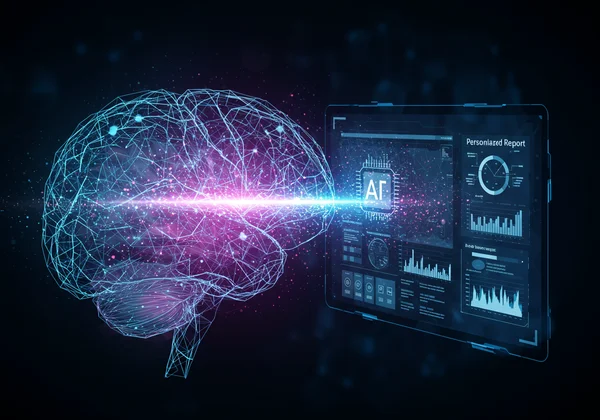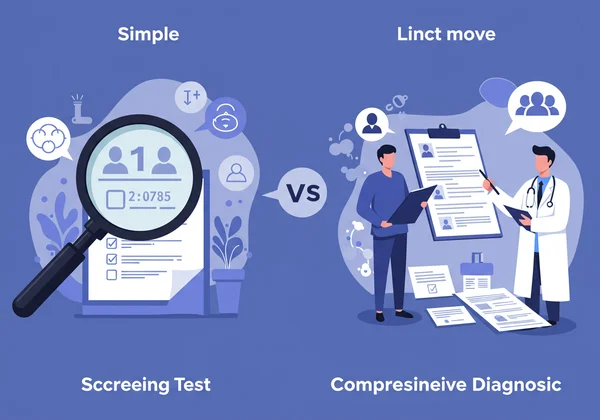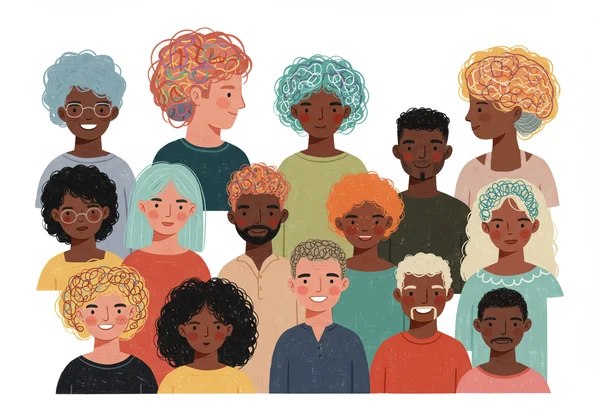AQ Test: Your Next Steps After Getting Your Score
You’ve just completed the Autism Spectrum Quotient (AQ) test and have your score in hand. This number might feel significant, raising questions and perhaps a mix of emotions. You may be wondering, what should I do after getting my AQ score? Think of this score not as a final destination, but as the first step on a meaningful path of self-discovery. It's a key that can unlock a deeper understanding of your unique traits and how you experience the world.

This guide will help you navigate what comes next. We'll explore how to interpret your results, leverage personalized insights, and decide on the best path forward for you. Whether you're just curious or seeking clarity, the journey starts now. If you haven't taken the test yet, you can get your score and begin your exploration.
Understanding Your AQ Score: What Does It Mean?
Receiving your AQ score is the first piece of the puzzle. This number, derived from the scientifically validated questionnaire developed by Simon Baron-Cohen and his team at Cambridge University, provides a snapshot of autistic traits. It’s a quantitative measure that helps contextualize your experiences, but it's the qualitative understanding that truly matters.
Interpreting Your AQ Test Results
An AQ test result is a point on a spectrum. Scores range from 0 to 50, and there isn't a simple "good" or "bad" number. Generally, a higher score suggests a greater number of autistic traits. Many non-autistic individuals score in the lower ranges, while many autistic adults score 32 or higher. However, these are just statistical thresholds, not definitive labels.
Your score is a prompt for reflection. It can help you understand patterns in your social skills, communication preferences, attention to detail, and sensory sensitivities. The real value comes from connecting this number to your lived experiences.
Unlocking Insights with Your AI Personalized Report
While a number is a useful starting point, it doesn’t tell the whole story. This is where the unique feature of our platform comes in. On our platform, you have the option to receive a detailed, AI-powered personalized report. This report goes far beyond a single score, translating your answers into meaningful narratives about who you are.
This analysis identifies your potential strengths, such as exceptional focus or pattern recognition. It also highlights potential challenges you might face in daily life and offers actionable suggestions for growth and well-being. This personalized insight is the bridge between a number and genuine self-understanding. To get a deeper look, you can explore your results on our platform.

Beyond the Score: Initial Self-Reflection & Exploration
Your after AQ test experience is deeply personal. Now that you have your results, it's time for gentle and compassionate self-reflection. This is not about judgment but about curiosity. Use your score and AI report as a lens to look at your life, both past and present, with a newfound perspective.
Connecting Your AQ Score to Daily Life Experiences
Start by thinking about the five areas the AQ test assesses: social skills, communication, imagination, attention to detail, and attention switching. How do your results in these areas show up in your day-to-day life? Perhaps your high score in attention to detail explains your talent for spotting errors others miss, or your score in social skills sheds light on why you find large gatherings draining.
Reflect on your relationships, your work or school environment, and your hobbies. Connecting the dots between your score and your daily life experiences can be incredibly validating. It can transform feelings of being "different" into a clear understanding of your specific neurotype.
Identifying Strengths and Areas for Growth
Neurodiversity is about recognizing that different brain wirings come with unique sets of abilities. Your AQ profile can help you in identifying strengths and areas for growth. Maybe your methodical thinking makes you an excellent planner, or your unique perspective fuels your creativity. Acknowledge and celebrate these strengths.
Simultaneously, be honest about areas that present challenges. Do you struggle with interpreting non-verbal cues? Do you get overwhelmed by sudden changes? Recognizing these areas isn't a weakness; it's an opportunity to develop coping strategies and seek appropriate support, turning challenges into pathways for personal development.
When to Consider Professional Consultation After Your AQ Test
While our autism test for adults is a powerful tool for self-exploration, it's vital to understand its role and limitations. This brings us to a crucial point: the difference between a screening tool and a clinical diagnosis. Being informed helps you make the best decision for your well-being.
The AQ Test is a Screening Tool, Not a Diagnosis
Let's be perfectly clear: The AQ test is a screening tool, not a diagnosis. It is designed to indicate whether you have a higher-than-average number of autistic traits. It cannot, and should not, be used to self-diagnose autism or any other condition. Its purpose is to provide information and guide your next steps, not to provide a medical conclusion.
Think of it like a vision screening at a school. If the screening suggests a child might have trouble seeing the board, it doesn't mean they officially have myopia. It means the next logical step is to see an optometrist for a comprehensive examination. Our free AQ test serves a similar informational purpose.

What a Clinical Autism Diagnosis Involves
A clinical autism diagnosis is a comprehensive process conducted by a qualified professional, such as a psychologist, psychiatrist, or neurologist. It involves much more than a single questionnaire. A formal assessment typically includes:
- Detailed Interviews: Discussing your developmental history, from childhood to the present.
- Observational Assessments: Standardized tools like the ADOS-2 (Autism Diagnostic Observation Schedule).
- Input from Others: Sometimes, with your permission, clinicians may speak with a family member or partner.
- Ruling Out Other Conditions: Differentiating autism from other conditions that may have overlapping traits.
If your AQ score and self-reflection strongly suggest you may be autistic, seeking a formal diagnosis can provide ultimate clarity and access to professional support.
Embracing Your Self-Discovery Journey
Regardless of your score or your decision to seek a professional opinion, you have embarked on a self-discovery journey. This journey is about embracing who you are, understanding your needs, and building a life that aligns with your authentic self. Armed with this new knowledge, you are now more empowered than ever before.
Resources and Support for Autistic Adults
If you identify with your results, connecting with others can be incredibly affirming. The autistic community is vast and welcoming. Online forums, social media groups, and local support organizations offer spaces to share experiences and learn from others. Finding your community can reduce feelings of isolation and provide practical advice for navigating a world often designed for neurotypicals. Your journey for information can start here.

Continued Learning and Understanding Neurodiversity
The concept of understanding neurodiversity is a powerful one. It reframes brain differences as a natural part of human variation, not as deficits. Continue to learn about the autism spectrum, sensory processing, executive function, and other related topics. The more you learn, the more you can advocate for yourself and educate others. Explore our blog for more articles on the autism spectrum test and related subjects.
Your Empowering Path Forward
Your journey with the AQ Test doesn't end with a score. It begins there. Your result is a compass, pointing you toward a deeper understanding of yourself. Use it to reflect on your experiences, celebrate your unique strengths, and identify areas where you might need more support. And remember the invaluable insights offered by our AI-powered personalized report, designed to give you a narrative, not just a number.
Whether you choose to seek a professional diagnosis, connect with the autistic community, or simply use this new knowledge for personal growth, you are in control. Empower yourself with information and continue your path of self-discovery with confidence and curiosity. To begin, take the free AQ test today.
Frequently Asked Questions After Taking the AQ Test
What does a high AQ test score mean?
A high AQ score (often considered 32 or above) indicates that you have a significant number of traits commonly associated with the autism spectrum. It is not a diagnosis but a strong indicator that further exploration, either through self-reflection or professional consultation, may be beneficial. It suggests your patterns of thinking, socializing, and perceiving the world align with those of many autistic individuals.
Is the AQ test a diagnosis for autism?
No, absolutely not. The AQ test is a preliminary screening tool. It is designed to measure autistic traits but cannot provide a clinical diagnosis. A formal diagnosis can only be made by a qualified healthcare professional through a comprehensive evaluation. Think of our AQ test as a first step to gather information about yourself.
What should I do after getting my AQ score?
After getting your score, take time for self-reflection. Use it as a guide to understand your personal strengths and challenges. We highly recommend exploring our optional AI personalized report for deeper insights. Depending on your results and feelings, you might consider connecting with online communities for support or speaking with a therapist or doctor about your results.
How accurate is the AQ test?
The Autism Spectrum Quotient test is a scientifically validated and widely used screening instrument. Research has shown it to be effective in distinguishing between autistic and non-autistic adults in a research setting. However, its accuracy as a standalone tool is limited. It is most powerful when used as part of a broader process of self-discovery and, if necessary, professional assessment.